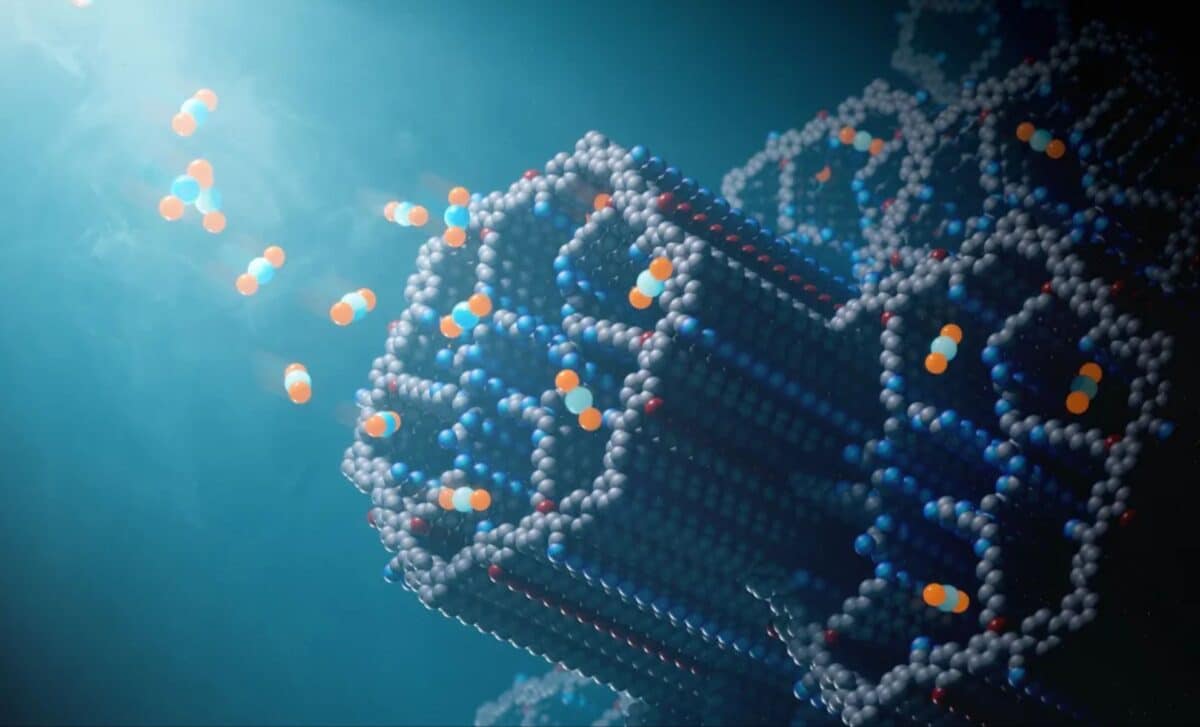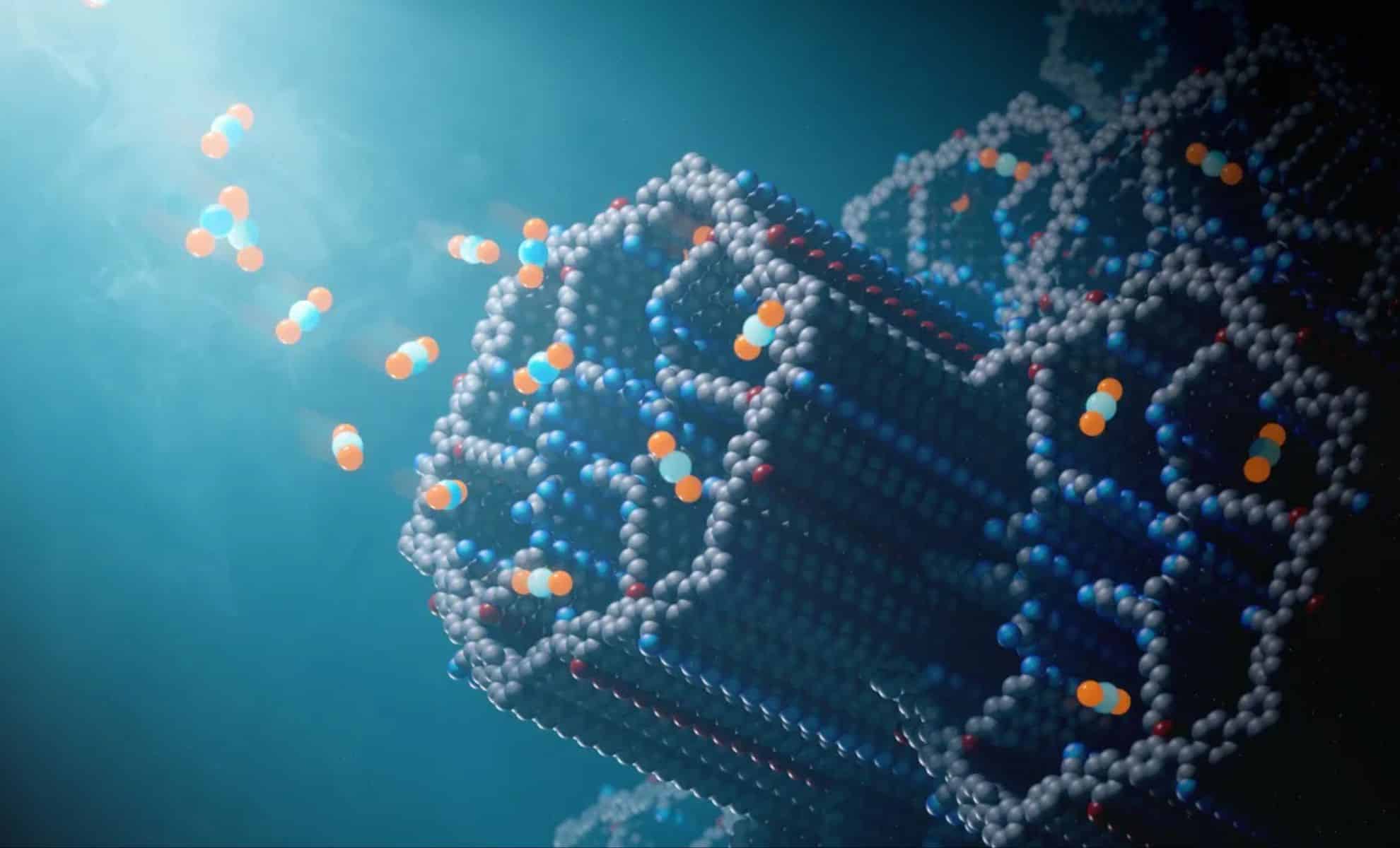Researchers at UC Berkeley have developed an innovative material, COF-999, that can efficiently remove carbon dioxide (CO2) from the air, offering a potential breakthrough in carbon capture technology. This new material is stable, reusable, and can remove CO2 at room temperature, making it a promising tool in the fight against climate change.
Scientists Develop Breakthrough Material for Carbon Capture, Could Reverse Rising CO2 Levels

Scientists at UC Berkeley have developed a groundbreaking material that promises to significantly advance carbon capture technologies.
This material, known as covalent organic framework-999 (COF-999), has the ability to efficiently remove carbon dioxide (CO2) from ambient air, a critical step in addressing rising CO2 levels linked to climate change. Unlike existing technologies, which are most effective in environments with high CO2 concentrations, COF-999 works in everyday atmospheric conditions. This new development could be a major breakthrough in reducing greenhouse gas emissions.
How COF-999 Captures CO2 Directly from the Air
The innovation behind COF-999 lies in its unique porous structure and its capacity to adsorb CO2 at room temperature. The material consists of hexagonal channels that are decorated with amines, which interact with CO2 molecules as air passes through. This interaction traps the carbon dioxide on the material’s surface, making it highly efficient at capturing CO2 without needing the extreme heat or pressure typically required by other carbon capture systems.
Professor Omar Yaghi, a key figure in the development of COF-999, highlighted the material’s potential, saying, “We took a powder of this material, put it in a tube, and we passed Berkeley air—just outdoor air—into the material to see how it would perform, and it was beautiful. It cleaned the air entirely of CO2.” He added, “I am excited about it because there’s nothing like it out there in terms of performance. It breaks new ground in our efforts to address the climate problem.”
Tests show that just 200 grams of COF-999 can absorb up to 20 kilograms of CO2 per year, equivalent to the carbon-capturing capacity of a tree. This means the material could play a crucial role in direct air capture, a technology aimed at pulling carbon dioxide directly from the atmosphere, which could help reduce CO2 levels to what they were 100 years ago.
Stability and Efficiency of COF-999 in Carbon Capture
What makes COF-999 particularly promising is its stability and reusability. According to Yaghi, the material can withstand 100 cycles of CO2 capture and release without any loss of performance. Unlike other carbon capture materials that degrade over time or require high energy input to regenerate, COF-999 is designed to maintain its efficiency over extended periods.
Yaghi’s research team spent 20 years developing this material, ensuring that it could endure harsh environmental conditions, including exposure to water, sulfur, nitrogen, and other contaminants that typically degrade porous materials. This resilience is a crucial feature, as it means COF-999 could be deployed in real-world carbon capture systems, operating efficiently even in challenging environments.
Zihui Zhou, a graduate student at UC Berkeley and the first author of the study, emphasized the importance of such technology in reversing the climate crisis. “Flue gas capture is a way to slow down climate change because you are trying not to release CO2 to the air,” Zhou explained. “Direct air capture is a method to take us back to like it was 100 or more years ago.”
This material's ability to withstand repeated use without significant energy costs makes it particularly attractive for large-scale implementation. Professor Yaghi pointed out, “This COF has a strong chemically and thermally stable backbone, it requires less energy, and we have shown it can withstand 100 cycles with no loss of capacity. No other material has been shown to perform like that.”
The Challenge and Potential of Direct Air Capture
One of the greatest challenges facing carbon capture technologies is the ability to efficiently remove CO2 from ambient air, where concentrations are significantly lower than in industrial emissions. Most carbon capture systems are designed to work in power plants and other industrial settings, where CO2 is concentrated in exhaust flues. However, capturing CO2 from the open air has always been a more complex and energy-intensive task.
Currently, CO2 levels in the atmosphere are around 420 parts per million (ppm)—50% higher than pre-industrial levels. Zhou noted that this concentration is likely to rise to 500 or 550 ppm before carbon capture technologies can be fully deployed at scale. Direct air capture is seen as an essential tool for not only slowing down the rise of CO2 levels but also for actively reducing them.
COF-999 could help address this challenge by providing a cost-effective and scalable solution for removing CO2 directly from the atmosphere. By integrating materials like COF-999 into existing carbon capture infrastructure, industries could potentially reverse the ongoing rise in global temperatures.
Future Implications and Scaling the Technology
While the development of COF-999 represents a significant advance in carbon capture, much work remains before it can be widely adopted. The next steps involve scaling up the material for industrial applications and exploring ways to further enhance its efficiency. The research team hopes to use machine learning techniques to improve the design of COF-999, making it even more effective at capturing CO2 while reducing production costs.
The Intergovernmental Panel on Climate Change (IPCC) has repeatedly stressed the importance of carbon removal technologies in combating climate change. While reducing emissions remains the top priority, direct air capture offers a way to reduce existing CO2 levels, which are already dangerously high.
As Professor Yaghi highlighted, the future of carbon capture will likely rely on a combination of technological advances like COF-999 and policy measures that incentivize the reduction of greenhouse gas emissions. “It’s basically the best material out there for direct air capture,” Yaghi concluded. “But we still need to continue developing and refining this technology if we are to make a real impact.”



